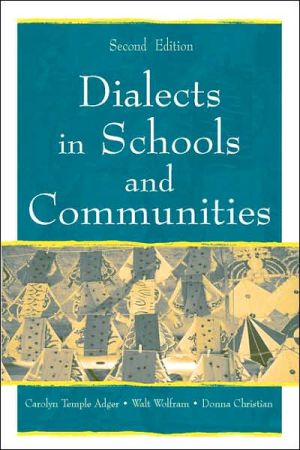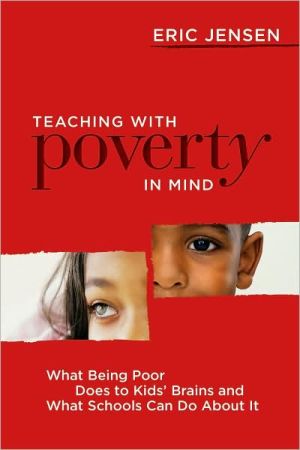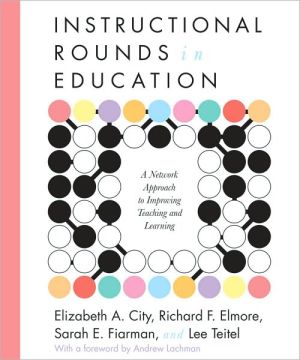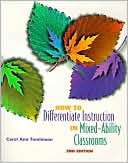Dialects in Schools and Communities
This book describes dialect differences in American English and their impact on education and everyday life. It explores some of the major issues that confront educational practitioners and suggests what practitioners can do to recognize students' language abilities, support their language development, and expand their knowledge about dialects. Topics addressed include: popular concerns about the nature of language variation; characteristic structures of different dialects; various...
Search in google:
This book describes dialect differences in American English and their impact on education and everyday life. It explores some of the major issues that confront educational practitioners and suggests what practitioners can do to recognize students’ language abilities, support their language development, and expand their knowledge about dialects. Topics addressed include:*popular concerns about the nature of language variation;*characteristic structures of different dialects;*various interactive patterns characteristic of social groups;*the school impacts of dialect differences in speaking, writing, and reading, including questions about teaching Standard English; and*the value of dialect education in schools to enable students to understand dialects as natural and normal language phenomena.Changes in the Second Edition: In this edition the authors reconsider and expand their discussion of many of the issues addressed in the first edition and in other of their earlier works, taking into account especially the research on dialects and publications for audiences beyond linguistics that have appeared since the first edition. This edition is offered as an updated report on the state of language variation and education in the United States.Dialects in Schools and Communities is rooted in questions that have arisen in workshops, surveys, classes, discussion groups, and conversations with practitioners and teacher educators. It is thus intended to address important needs in a range of educational and related service fields. As an overview of current empirical research, it synthesizes current understandings and provides key references—in this sense it is a kind of translation and interpretation in which the authors’ goal is to bring together the practical concerns of educators and the vantage point of sociolinguistics. No background in linguistics or sociolinguistics is assumed on the part of the reader. This volume is intended for teacher interns and practicing teachers in elementary and secondary schools; early childhood specialists; specialists in reading and writing; speech/language pathologists; special education teachers; and students in various language specialties.
Preface ixLanguage Variation in America 1Issues and Definitions 1Popular Meanings of Dialect 2Accent and Dialect 3Levels of Language Differences 4Sources of Dialect Difference: Region and Social Class 5Language Standards 7Language, Logic, and Language Complexity 11Standard English 13Dialects and Understanding 15Deficit Versus Difference 17Cultural Differences 20Multiple Dialects in Schools 21Language Attitudes in Society 22Dialect Change in the United States 27Further Study 28Exploring Dialects 30Dialect Study 30Considering Social Factors 31Examining Particular Patterns 33Variation in Linguistic Systems 36Pronunciation Differences 37Regional Dialects 38Social Dialects 39Grammar Differences 43Suffixes 43Other Differences in the Verb System 46Other Grammatical Differences 48Illustrative Dialect Samples 49Appalachian Ghost Story 49Wild Life 50Notes on Transcripts 52Vocabulary Differences 55Vocabulary Matters Across Dialects 56African American English 58The Origins of African American English 59The Changing State of African American English 60Dialect or Language? 61Further Study 62Social Interaction 63Conversational Politeness 64Making Meaning 66Cooperation in Communicating 67The Role of Context in Making Meaning 57Figurative Language in Context 69Language Rituals 70Conversational Misadventures 71Cultural Styles in the Classroom 73Understanding Students' Language Behavior 77Researching Classroom Interaction 78Data Collection 78Data Analysis 79Living With Language Behavior Differences 81Classroom Rules 81Further Study 84Interpreting Language Difference 86Perceptions of Language Standards 87Are Students' Language Skills Declining? 89Diversity and Test Scores 89Differences and Disorders 90Language at Home and at School 92Early Literacy 93Dialect Differences and Curriculum Content 94Further Study 97Oral Language Instruction 98Standard English and Social Reality 98Group Reference and Dialect Learning 99Positions on Dialects and Dialect Education 100Policy Development 103Curriculum Development 104Methods of Teaching Spoken Standard English 108Promoting Language Development 110Further Study 111Dialects and Writing 113Oral and Written Language 113Vernacular Dialect and Writing 115Vernacular Influence in Writing 115Difference and Error in Written Language 116Teaching Writing 117Editing 119Approaches to Editing 119Peer Editing 120Writing in the Vernacular Dialect 120Choosing the Vernacular 121Dialogue Journals 121Assessment of Writing Ability 122Further Reading 124Language Variation and Reading 125Written Language and Spoken Language 126What Do Teachers Need to Know About Dialects to Teach Reading? 127Language Form 127Beyond Language Form 129Teaching Children to Relate Sound and Print 130Effects of Dialect Differences on Reading Aloud 131Dialects and Meaning-Based Reading Instruction 132Teaching Children to Comprehend Text 133Vocabulary 134Comprehension Strategies 134Background Knowledge and Comprehension 135Reading Materials and Dialect Differences 136Matching Materials and Dialects 136Dialect Readers 136Language Experience 138Vernacular Dialect for Rhetorical Purpose 139Reading and the Acquisition of Standard English 139The Social Context of Reading 140Reading Tests and Dialect Differences 141Pronunciation, Grammar, and Vocabulary Differences 142Background Knowledge 143Other Fairness Factors 148Further Reading 150Dialect Awareness for Students 151Resources for Learning About Dialects 153Working With Data 154Dialect Awareness 156Introduction to Language Diversity 156Levels of Dialect 157The Patterning of Dialect 166Language Change 179Implementing Dialect Awareness Curricula 181Further Study 186An Inventory of Distinguishing Dialect Features 187Phonological Features 188Consonants 188Vowels 191Grammatical Features 195Adverbs 201Negation 203Nouns and Pronouns 205Other Grammatical Structures 208References 209Author Index 217Subject Index 221








